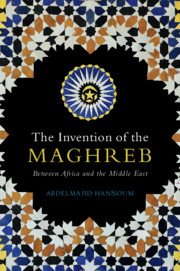Book contents
- The Invention of the Maghreb
- The Invention of the Maghreb
- Copyright page
- Dedication
- Contents
- Maps
- Tables
- Acknowledgments
- Introduction
- 1 Geographic Imagination and Cartographic Power
- 2 The Trace and Its Narratives
- 3 Language, Race, and Territory
- 4 Naming and Historical Narratives
- 5 Strategies for the Present
- 6 Cracks
- Postscript
- Bibliography
- Index
Introduction
Published online by Cambridge University Press: 13 May 2021
- The Invention of the Maghreb
- The Invention of the Maghreb
- Copyright page
- Dedication
- Contents
- Maps
- Tables
- Acknowledgments
- Introduction
- 1 Geographic Imagination and Cartographic Power
- 2 The Trace and Its Narratives
- 3 Language, Race, and Territory
- 4 Naming and Historical Narratives
- 5 Strategies for the Present
- 6 Cracks
- Postscript
- Bibliography
- Index
Summary
This chapter examines maps of the region from precolonial times, especially the eighteenth century, up to the colonial period. It traces the visual representation of the region as a distinct unit, with specific contours and names. It also looks at the frontiers of the region westward and eastward and examines how geopolitics imposed certain cuts excluding Libya, an Italian colony, and Egypt, a British colony that became important after Napoleon, in the construction of an Arab Middle East. The chapter looks at popular forms of knowledge, especially the atlas, to examine how the conception and the name of the Maghreb were made available for a larger audience in order to shape the geographic imaginary of the modern citizen in Europe as well as in the colonies
- Type
- Chapter
- Information
- The Invention of the MaghrebBetween Africa and the Middle East, pp. 1 - 29Publisher: Cambridge University PressPrint publication year: 2021

